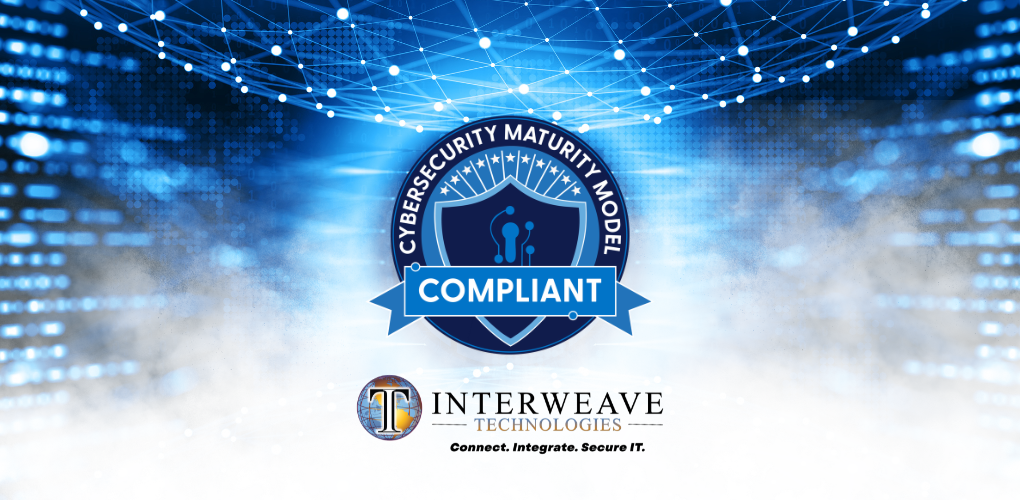The Ultimate Guide to the Cybersecurity Maturity Model Certification (CMMC)

Why Does Cybersecurity Maturity Matter for Enterprise and Government Contractors?
Cybersecurity maturity defines an organization’s ability to protect sensitive data, manage risk, and satisfy evolving contract requirements. By mapping controls to business processes and demonstrating repeatable practices, contractors ensure eligibility for federal awards and safeguard national security. Mature security postures also drive operational resilience, lower incident costs, and reinforce stakeholder trust—forming the foundation for sustainable growth and defense-grade partnerships.
Below are three core benefits of a mature cybersecurity program:
- Contract Eligibility – Demonstrates adherence to DoD requirements and unlocks new procurement opportunities.
- Data Protection – Ensures Controlled Unclassified Information (CUI) remains secure.
- Competitive Edge – Positions organizations ahead of peers through transparent risk management and compliance proof points.
These advantages converge in one outcome: sustained access to high-value contracts and reduced exposure to cyber threats. Next, we examine how CMMC compliance directly underpins these benefits.
How Does CMMC Compliance Ensure Contract Eligibility and Data Protection?
CMMC 2.0 requires organizations to implement practices from basic cyber hygiene to advanced control frameworks, creating a single, verifiable standard for DoD contractors. By completing an accredited third-party assessment at Level 2 or higher, businesses prove they can protect CUI and maintain contract eligibility. This credential drives bid success while enforcing consistent data-protection mechanisms across the supply chain.
What Are the Risks of Non-Compliance with Cybersecurity Standards?
Organizations lacking assessed security controls face three critical risks: disqualification from DoD solicitations, severe breach remediation costs, and reputational damage among prime contractors. Unmanaged vulnerabilities invite ransomware, data exfiltration, and operational disruption—culminating in contract termination and regulatory penalties. Effective maturity programs eliminate these hazards by embedding continuous monitoring and governance.
How Does Continuous Security Posture Improvement Protect Your Organization?
Ongoing maturity initiatives combine automated monitoring, periodic reassessments, and Plan of Action and Milestones (POA&M) management to close gaps before they escalate. Continuous improvement ensures that emerging threats and regulatory updates—such as NIST 800-171 revisions—are rapidly incorporated. This adaptive cycle of evaluate → remediate → verify underpins sustained resilience and instills confidence in customers and auditors.
What Is the Cybersecurity Maturity Model Certification (CMMC 2.0)?

CMMC 2.0 is a unified compliance framework that blends NIST SP 800-171 controls with third-party assessments to verify cybersecurity maturity across Department of Defense contractors. By consolidating self-attestation and formal audits into three streamlined levels, CMMC 2.0 reduces complexity, clarifies requirements, and enhances supply-chain assurance.
CMMC and DoD Contract Requirements
The Cybersecurity Maturity Model Certification (CMMC) is a unified standard for cybersecurity requirements for Department of Defense (DoD) contractors. It integrates various cybersecurity practices and assessment processes to ensure a consistent level of security across the defense industrial base. This model helps to protect Controlled Unclassified Information (CUI) and Federal Contract Information (FCI).
Department of Defense, Cybersecurity Maturity Model Certification (CMMC) Program (2024)
This source provides the foundational context for understanding the CMMC's role in securing DoD contracts.
For example, a mid-tier subcontractor seeking Level 2 must implement all 110 NIST-171 controls, submit a System Security Plan (SSP), and pass a C3PAO evaluation.
What Are the Three Levels of CMMC 2.0 and Their Core Requirements?
The following table compares CMMC 2.0 levels, their control baselines, and assessment types:
Each level builds on the previous one, requiring deeper process maturity and formal validation. Understanding these distinctions guides organizations to the appropriate certification target.
How Does CMMC 2.0 Relate to NIST SP 800-171 and Controlled Unclassified Information (CUI)?
CMMC 2.0 Level 2 essentially codifies NIST SP 800-171 as the baseline for protecting CUI in non-federal systems. The model maps each control family—such as Access Control and Incident Response—to CUI safeguarding requirements, creating a direct relationship: (CMMC 2.0) → requires → (NIST SP 800-171). Entities handling design data, blueprints, or IP labeled as CUI must therefore meet these 110 controls under CMMC audit.
NIST SP 800-171 and CUI Protection
NIST SP 800-171 provides a set of security requirements for protecting the confidentiality of Controlled Unclassified Information (CUI) in nonfederal systems and organizations. These requirements are a key component of CMMC Level 2, which is often required for DoD contractors. Implementing these controls helps to safeguard sensitive data from unauthorized access and disclosure.
National Institute of Standards and Technology, Protecting Controlled Unclassified Information in Nonfederal Systems and Organizations (2021)
This citation clarifies the relationship between NIST 800-171 and the protection of CUI, a central theme in the article.
Who Needs CMMC Certification and Why?
Any organization contracting with the DoD or its primes and handling CUI or Federal Contract Information (FCI) must achieve the appropriate CMMC level before bidding on new solicitations. Subcontractors at any tier fall under this mandate. Performance of critical national security programs also triggers a Level 3 requirement. By securing certification, businesses assure primes and the DoD of their consistent cybersecurity maturity.
How Does the CMMC Certification Process Work?
A Step-by-Step Guide
The CMMC certification journey consists of five sequential phases—Gap Analysis, Remediation Planning, Pre-Assessment Preparation, Official Assessment, and Continuous Improvement—each building toward validated security maturity. Organizations begin by evaluating current practices, then systematically address weaknesses before engaging a C3PAO for final validation.
- Conduct a comprehensive CMMC Gap Analysis with a qualified assessor.
- Develop and implement a prioritized remediation plan (POA&M).
- Prepare documentation: SSP, incident response plan, training records.
- Schedule and undergo the C3PAO assessment aligned to the target level.
- Enter a continuous monitoring cycle to maintain certification status.
What Is a CMMC Gap Analysis and Why Is It Critical?
A gap analysis benchmarks existing policies, configurations, and processes against CMMC 2.0 requirements. By identifying missing controls—such as unpatched systems or incomplete training programs—organizations can prioritize remediation tasks in a System Security Plan and POA&M. Early gap detection averts last-minute surprises during the formal assessment.
How Do You Choose a CMMC Third-Party Assessment Organization (C3PAO)?
Selecting a C3PAO involves verifying accreditation by the CMMC Accreditation Body (Cyber-AB), reviewing assessor credentials, and confirming industry experience with similar DoD programs. Key criteria include scope of service, onsite versus remote options, and clarity on deliverables such as Detailed Assessment Reports and Letter of Compliance.
What Are the Phases of a CMMC Assessment and What to Expect?
Below is an overview of the CMMC audit lifecycle:
Assessors validate controls, interview key personnel, and inspect system configurations. Organizations address minor findings via POA&M; major gaps must be closed before certification is granted.
What Are the Key NIST 800-171 Controls and DFARS 252.204-7012 Requirements?
NIST SP 800-171 defines 14 control families, 110 requirements, and 320 specific objectives to safeguard CUI in non-federal systems. DFARS 252.204-7012 mandates implementation of those controls and requires immediate cyber incident reporting to the DoD. Together, they form a unified compliance baseline for defense contractors.
How Do NIST SP 800-171 Controls Safeguard Controlled Unclassified Information (CUI)?
NIST 800-171’s access control, awareness training, and configuration management families enforce principle-of-least-privilege, employee security education, and secure baseline settings. These safeguards prevent unauthorized disclosure, modification, or destruction of CUI, ensuring confidentiality and integrity across contractor networks.
What Does DFARS 252.204-7012 Mandate for DoD Contractors?
DFARS 7012 requires prime and subcontractors to implement NIST 800-171 controls, report cyber incidents within 72 hours, and preserve evidence. Contractors must flow down these requirements through subcontracts, embedding cybersecurity into every tier of the supply chain.
DFARS 252.204-7012 and Cyber Incident Reporting
DFARS 252.204-7012 mandates that DoD contractors implement NIST SP 800-171 security controls and report cyber incidents. This clause requires contractors to report cyber incidents within 72 hours and preserve evidence, ensuring accountability and rapid response to security breaches. Compliance with DFARS is essential for maintaining eligibility for DoD contracts.
Defense Federal Acquisition Regulation Supplement, DFARS 252.204-7012, Safeguarding Covered Defense Information and Cyber Incident Reporting (2024)
This citation explains the requirements of DFARS 252.204-7012 and its importance for DoD contractors.
How Do CMMC, NIST, and DFARS Work Together for Unified Compliance?
CMMC 2.0 formalizes NIST 800-171 and DFARS 7012 into a graded maturity model. This alignment means (CMMC) → codifies → (NIST 800-171/DFARS) controls, streamlining audits and enhancing accountability. Contractors achieve DFARS compliance by meeting CMMC Level 2 criteria under third-party assessment.
How Do Managed IT and Cybersecurity Services Facilitate CMMC Compliance?

Managed IT and cybersecurity services transform compliance from a one-off project into an embedded business capability. By outsourcing continuous monitoring, patch management, and incident response to experts, organizations gain on-demand support for evolving CMMC requirements, freeing internal teams to focus on core missions.
What Role Do Managed IT Services Play in Continuous Compliance Monitoring?
Managed Security Service Providers (MSSPs) deploy automated toolsets for log aggregation, vulnerability scanning, and policy enforcement. Real-time dashboards highlight emerging threats and compliance drift, enabling proactive remediation without waiting for annual assessments.
How Are Cybersecurity Solutions Tailored for Government Contractors?
Solutions for the Defense Industrial Base integrate specialized features—such as segmented CUI enclaves, hardened endpoint configurations, and formal audit evidence collection—into everyday operations. This customization ensures that each control aligns with contract clauses and DoD security directives.
What Is the Cost of CMMC Certification and the ROI of Compliance?
CMMC certification costs vary by level and organizational size—from approximately $5,000 for a Level 1 self-assessment to over $100,000 for a Level 2 third-party audit. The return on investment manifests in avoided contract penalties, reduced breach recovery expenses (which average $4 million), and enhanced bidder credibility that can yield higher-value awards.
What Are Common Questions About Cybersecurity Maturity and CMMC Compliance?
Organizations often seek clarity on certification steps, cost drivers, and regulatory overlaps. Below are succinct explanations that accelerate decision-making and guide next steps toward maturity.
How Do I Get CMMC Certified?
Certification begins with a gap analysis followed by remediation of identified weaknesses. After preparing your SSP and POA&M, you engage an accredited C3PAO to perform the formal assessment aligned to your target level. Successful audit results in certification validity for three years.
What Is a CMMC Gap Analysis?
A CMMC gap analysis is a systematic review of existing policies, procedures, and technologies against CMMC 2.0 requirements. It uncovers missing controls and generates a prioritized action plan to achieve target maturity levels.
Who Needs CMMC Certification?
Any entity that handles Controlled Unclassified Information (CUI) or Federal Contract Information (FCI) under Department of Defense contracts must obtain CMMC certification at the level specified in the solicitation.
How Much Does CMMC Certification Cost?
Certification costs depend on target level, organizational complexity, and remediation effort. Level 1 self-assessments average $5,000–$10,000, while Level 2 third-party audits typically range $50,000–$120,000. Level 3 expert reviews can exceed $250,000 for large enterprises.
Are DFARS 7012 and NIST SP 800-171 the Same?
No. DFARS 7012 is a contracting clause that mandates implementation of NIST 800-171 controls and incident reporting requirements. NIST 800-171 is the technical standard that defines those controls for CUI protection.
How Can Interweave Technologies Help You Elevate Your Cybersecurity Maturity?
Interweave Technologies provides enterprise-grade managed IT and cybersecurity services designed to simplify CMMC compliance. By combining deep DoD supply-chain expertise with proactive support, Interweave enables organizations to meet auditing requirements, strengthen defenses, and sustain certification readiness.
What Managed IT and Cybersecurity Services Does Interweave Provide for Government Contractors?
Interweave and its strategic partners deliver:
- CMMC Gap Analysis and Remediation Planning under the direction and supervision of a Certified CMMC Assessor
- System Security Plan (SSP) and POA&M Development to streamline evidence collection
- Full Remediation and Implementation of all action items in the POA&M
- Managed or Co-Managed IT Services and Support, including a 24/7 Help Desk, Network Engineers, System Administrators, and specialists in commonly used DoD applications
- Fully Managed Cybersecurity Tools and Services, provided comprehensively and without subscription fees to ensure the highest level of security and support
- Continuous Monitoring and Incident Response via 24/7 Security Operations Center (SOC) integration and advanced SIEM/SOAR toolsets
- Ongoing Management and Monitoring to maintain compliance and ensure evidentiary support is consistently updated and available
- Mock Assessments to validate compliance readiness before a C3PAO audit
- Third-Party Assessment Coordination with accredited C3PAOs
- Policy Management and Security Awareness Training to embed security best practices into organizational culture
- Compliance Maintenance, with continuous improvements as cybersecurity requirements, controls, and objectives evolve over time
How Does Interweave Simplify the CMMC Certification Pathway?
Interweave’s proprietary comprehensive program integrates Certified CMMC Assessors to monitor and supervise all implemented practices. Coupled with automated compliance tracking and expert consultancy, Interweave simplifies the certification process. It automates evidence collection, generates audit-ready documentation, and supports you through every assessment milestone. With ongoing readiness evaluations, the program ensures certification preparedness before your formal C3PAO assessment.
Why Choose Interweave for Ongoing Compliance and Risk Mitigation?
With Certified CMMC Professionals and Assessors and a proven track record in defense contracting, Interweave instills trust through demonstrated technical proficiency and disciplined processes. Clients experience up to a 40% faster remediation cycle and 30% lower audit costs compared to conventional approaches.
How to Book Your Free Cybersecurity Maturity Assessment Today?
To schedule a no-cost, no-obligation maturity consultation with Interweave Technologies, visit our compliance services page or contact our CMMC specialists at info@interweavetech.net. Secure your free evaluation and kick-start your roadmap to Defense Industrial Base certification.
________________
Frequently Asked Questions
What is the difference between CMMC 2.0 and previous versions?
CMMC 2.0 simplifies the certification process by consolidating the previous five levels into three streamlined levels, reducing complexity and enhancing clarity. It also allows for self-assessments at Level 1 and a triennial third-party assessment at Level 2, making it more accessible for organizations. This version emphasizes the importance of protecting Controlled Unclassified Information (CUI) while ensuring that compliance requirements are easier to understand and implement for Department of Defense contractors.
How often do organizations need to undergo CMMC assessments?
Organizations must undergo assessments based on their CMMC level. For Level 1, an annual self-assessment is required, while Level 2 mandates a third-party assessment every three years. Level 3 requires government-led critical program reviews, which are also conducted periodically. Continuous monitoring and improvement are essential to maintain compliance and adapt to evolving cybersecurity threats and regulatory changes.
What are the consequences of failing a CMMC assessment?
Failing a CMMC assessment can lead to significant consequences, including disqualification from bidding on Department of Defense contracts, loss of existing contracts, and potential reputational damage. Organizations may also face increased scrutiny from clients and partners, which can hinder future business opportunities. To mitigate these risks, it is crucial to address identified gaps promptly and engage in continuous improvement efforts.
Can small businesses achieve CMMC certification?
Yes, small businesses can achieve CMMC certification, and many are actively pursuing it to remain competitive in the defense contracting space. CMMC 2.0 has been designed to accommodate organizations of all sizes, with Level 1 being particularly accessible. Small businesses can leverage resources, such as consulting services and managed IT solutions, to navigate the certification process and implement necessary cybersecurity controls effectively.
What role does employee training play in achieving CMMC compliance?
Employee training is a critical component of achieving CMMC compliance, as it ensures that all personnel understand their responsibilities regarding cybersecurity practices and policies. Regular training helps to foster a culture of security awareness, reducing the likelihood of human error that could lead to data breaches. Organizations must implement ongoing training programs to keep employees informed about evolving threats and compliance requirements.
How can organizations prepare for a CMMC assessment?
Organizations can prepare for a CMMC assessment by conducting a thorough gap analysis to identify areas needing improvement. Developing a comprehensive System Security Plan (SSP) and a Plan of Action and Milestones (POA&M) is essential. Additionally, organizations should ensure that all documentation is up-to-date, conduct internal audits, and engage in employee training to ensure readiness for the formal assessment process.
Conclusion
Investing in cybersecurity maturity not only fulfills DoD compliance requirements but also enhances operational resilience and competitive positioning. By understanding the intricacies of CMMC 2.0, NIST 800-171, and DFARS 7012, organizations can effectively safeguard sensitive information and secure high-value contracts. Take the next step towards achieving your certification goals by exploring our comprehensive managed IT and cybersecurity services. Contact us today to schedule your free cybersecurity maturity assessment and start your journey towards compliance success.
.webp)
.webp)







.webp)





Share Post